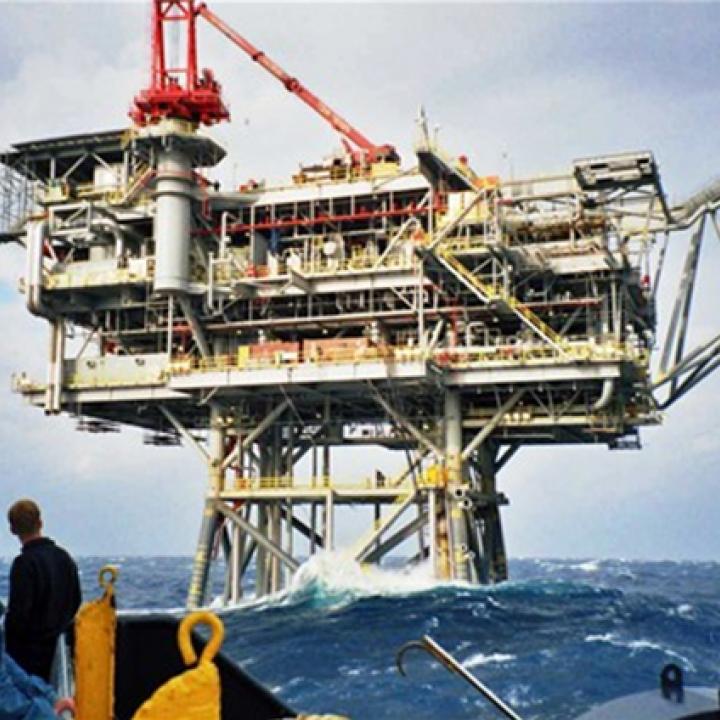
- Policy Analysis
- Policy Alert
Rocket Fire on Israeli Gas Platforms Could Escalate Gaza Fighting

Although scoring a direct hit would be difficult, Hamas fire against Israel's offshore rigs could prove very significant given the crucial role gas plays in generating the country's electricity.
Earlier today, Hamas claimed to have fired two rockets at an Israeli natural gas installation located about nineteen miles off the coast of Gaza. The Israeli military neither confirmed nor denied the claim, merely saying that its offshore gas platforms have not been struck.
There are two gas platforms off the coast of southern Israel, both reachable by fire from Gaza. The main one is the production platform for the Tamar field, Israel's largest producing gas reserve. Tamar fuels an increasing proportion of the country's electricity -- by 2015 the figure is forecast to be as high as 50 percent. Although the Tamar field itself lies fifty miles offshore from the northern port city of Haifa, it has to be pumped along nearly 100 miles of subsea pipe to a platform off the southern city of Ashkelon for initial cleaning. It is then piped ashore for further treatment at a special plant in Ashdod before entering the gas grid. A mile away from the Tamar production platform, in waters similarly around 800 feet deep, stands the Mari-B platform, which served a similar purpose for the now-depleted Mari-B and Noa gas fields. It is unclear which platform the Hamas rockets were targeting, or indeed whether they were fired at all.
Despite media commentary that this was the first reported rocket attack on Israeli offshore gas installations, rockets were fired in their general direction in at least one earlier confrontation. Yet the rockets fielded thus far by Hamas and other Gaza militants are unguided and without radar-homing or heat-seeking warheads, so unless they are fired in large salvoes, the platforms are a very difficult target for them. Even so, the mere threat of such fire raises the possibility of having to shut down production for safety reasons.
Israeli officials and Noble Energy -- the U.S. gas company that dominates Israeli production -- have been circumspect about describing the various threats the platforms face and the countermeasures installed. An April article in the Israeli business newspaper Globes noted that any boat approaching within seven miles of the platforms is intercepted, and that Palestinian fishermen sometimes sail "like a swarm of zealots" toward the installations "to take them over." Such tactics help explain Israel's maritime stance during the recent Cairo ceasefire negotiations: it would only concede the expansion of fishing areas off Gaza to twelve miles.
The Hamas claim also points to a curious absence in reporting during the Gaza crisis: namely, the failure to mention the Palestinians' own offshore gas field, known as "Gaza Marine," located twenty-two miles out to sea. As yet unexploited, the field contains one trillion cubic feet of gas, potentially worth around $5 billion at current prices. Until the Palestinian Authority entered a political coalition with Hamas in April, Israel was actively encouraging development of the PA-owned field. Without such development, Gaza remains reliant on electricity supplied by Israel, Egypt, and a power plant outside Gaza City that was damaged during the latest fighting.
Simon Henderson is the Baker Fellow and director of the Gulf and Energy Policy Program at The Washington Institute, and author of the recent study "Natural Gas in the Palestinian Authority: The Potential of the Gaza Marine Offshore Field."


